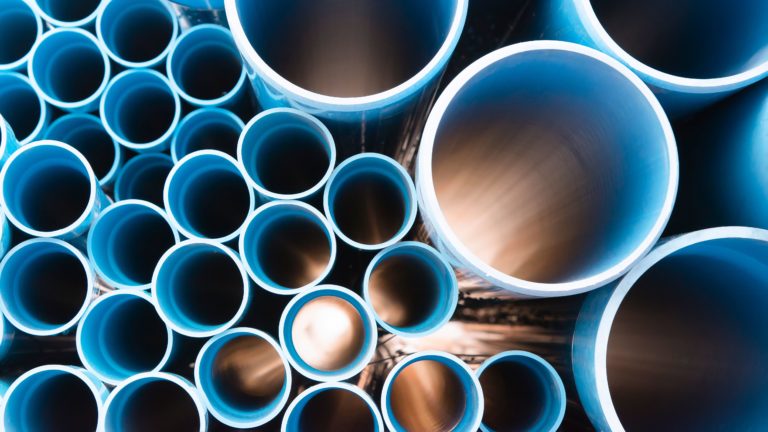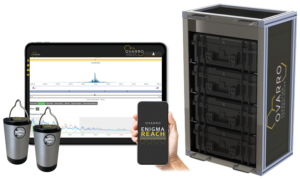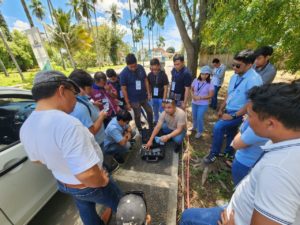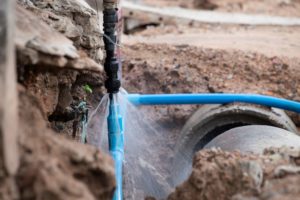Pinpoint Leak Detection on Plastic Pipes Now Possible

Pinpoint Leak Detection on Plastic Pipes Now Possible (Image source: Ovarro Ltd)
This important investment will help the sector save more than a billion litres of water each day by 2030, says Water UK. It will also bring to the fore the challenge of finding leaks on plastic pipes and further drive innovation in this area.
In the 1980s, polyethylene plastic became the preferred material for new water mains as it was considered more durable and less prone to leaks than metal pipes. According to a UK Water Industry Research 2020 study, around 95,000km of the UK’s drinking water pipe network is made of polyethylene plastic, with the material being used for 90% of new water mains laid.
While this expansion of the plastic network has helped reduce leakage, it has made traditional acoustic methods of leakage detection – listening for noise outside of the pipe - more difficult. Plastic pipes do leak but sound does not travel as far as it does on metal.
Consider a musical tuning fork – these are made of metal because they continue to resonate after being struck. The fork would not work if it was made of plastic. The same is true for a plastic water pipe - any sound caused by a leak does not transmit as far or as quickly along the pipe wall, so cannot reliably be picked up by acoustic sensing technology.
Technology has evolved to address the challenge. Ovarro’s game-changing hydrophone sensor – Enigma3hyQ – was developed with Anglian Water to pinpoint leaks by measuring sounds generated inside pipes.
The hyQ sensors were found to be effective in accurately finding leaks over long distances, including on pipes made from plastic.
Development of the Enigma3-BB used the same hydrophone technology but allowed the sensors to be installed directly into an operational meter box chamber, rather than via a fire hydrant or by digging a new pit, giving technicians more installation options.
Expanding the company’s offering further, Ovarro launched LeakNavigator in 2023, as the UK’s first fully-managed, fixed network leakage service. The as-a-service model comprises Ovarro loggers, cloud-based software and Ovarro’s in-house leakage expertise.
In late 2022, LeakNavigator, with the Enigma3-BB, was trialled by Southern Water across district metered areas (DMAs) in Kent, Sussex, Hampshire and the Isle of Wight. A total of 1,800 Enigma3-BBs were deployed. What began as a trial quickly became business-as-usual, with 47 of Southern Water’s DMAs now covered by LeakNavigator and Ovarro loggers.
In April 2024, LeakNavigator was recording for Southern Water a leak conversion rate of up to 78%. The system had found 851 leaks, more than 90% of which were on plastic pipes, which may not have been detected using traditional methods. Fifty-nine burst mains have also been confirmed.
Since LeakNavigator was deployed, leakage levels in 35 of the 47 DMAs targeted by Southern Water have reduced.
Some 32% of leaks found were on communication pipes, which carry water between the water mains and the boundary of private property; 16% were on customer pipes. These figures show that the hydrophone is picking up leaks on a range of pipes and materials.
Thames Water has also implemented LeakNavigator in a project that saw installation of 3,450 sensors across 106 DMAs, with both plastic and metal pipes. Between January 2023 and January 2024, Thames Water had identified 1,364 leaks. Following repairs this had saved in excess of 12 megalitres/day (MLD).
Another UK utility customer has seen similar success, as reported by Ovarro leakage product specialist Paul Holt. The water company deployed the Enigma3BB over a whole DMA, covering a total of 17,800m of mains. The particular DMA had seen a gradual increase of night-time flow, indicating leakage. LeakInsight (part of the Ovarro Atrium suite of software) issued a point-of-interest to a technician to follow-up and a burst on a 200mm plastic main was located.
Holt said: “The burst was repaired, reducing night-time leakage by 5.5 l/s per second, a low that DMA had not seen for over 12 months. Regular traditional surveying of this area had not located this leak, with no noise on any fittings nearby, despite the nearest fitting being just 7m away. Repairs made from further POIs issued have resulted in a drop in the nightline that has not been seen since November 2019, and brought overall leakage levels in the DMA down to a historical low.”
Of course, leakage is a global challenge, with around a third of the world’s treated water being lost before it reaches customers. Plastic networks will grow globally, as ageing pipes are replaced, and Ovarro is working with partners to ensure water utilities across Europe, Asia and America have access to effective tools for all pipe materials.
Suppliers like Ovarro will continue to develop technologies that enhance leakage detection methods across all network types. Continued investment from water companies and a willingness to collaborate with suppliers and trial new solutions will help accelerate innovation further.
Source: Ovarro Ltd.







